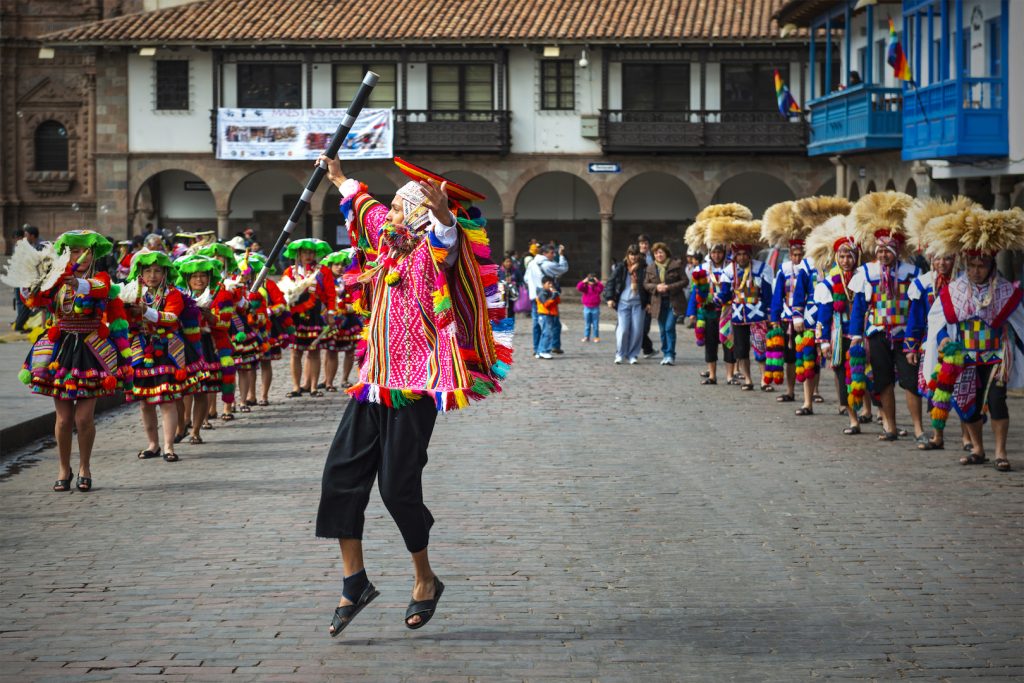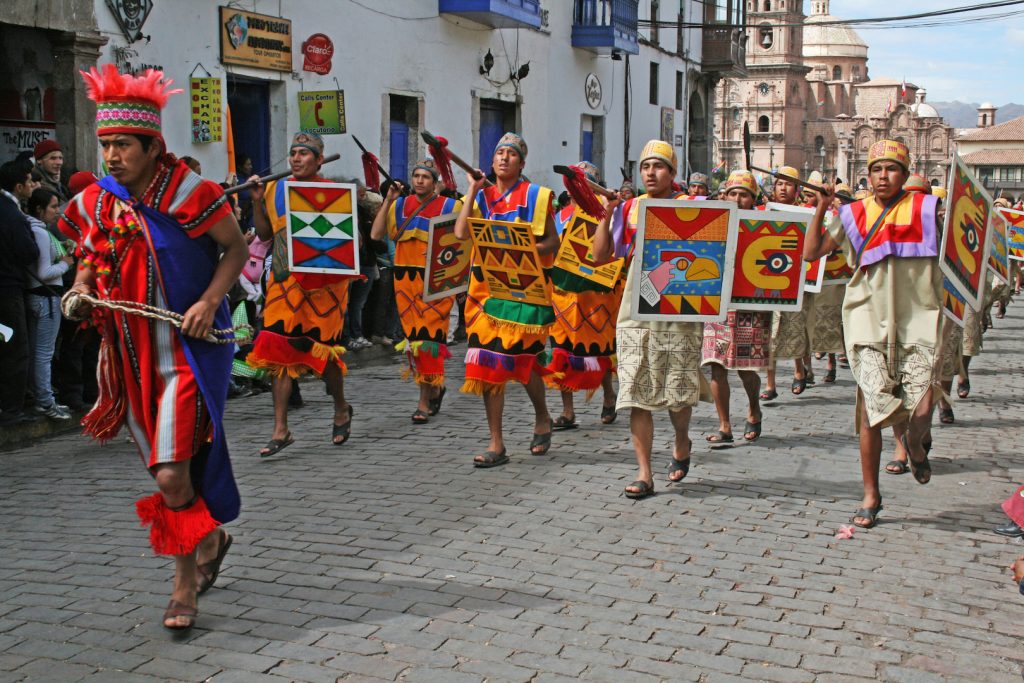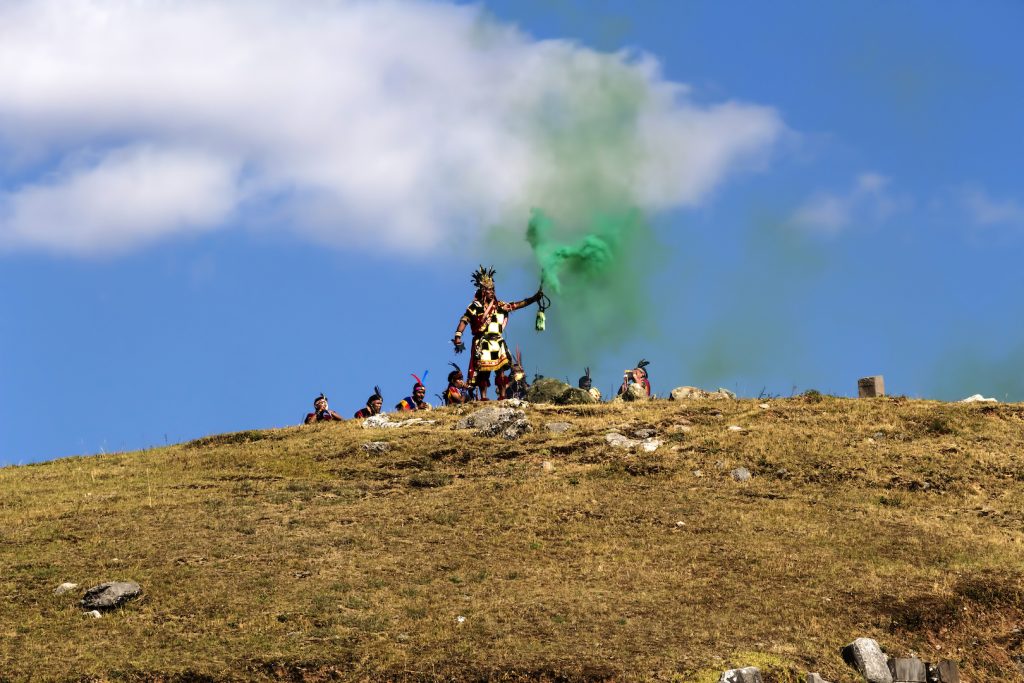Peru Travel with Kids: The Inti Raymi Sun Festival
ABOUT
At Our Whole Village, we plan meaningful vacations for families who want to create lifelong memories and show their kids the world in a more conscious and intentional manner.
WORK WITH US
We help families take meaningful vacations so that they can escape everyday life, show their kids the world and make lifelong memories - with care, confidence and peace of mind.
THE BEST FAMILY VACATIONS BY AGE
Your (free) guide to the top travel destinations for families with babies, teens and everyone in between.
DOWNLOAD NOW
ABOUT US
June 18, 2019
Every year, people from all over the world gather in Peru to watch the Inti Raymi on June 24th. The celebration takes place in the heart of the former Incan Empire, the Sacred Valley. From Machu Picchu to Cusco and Sacsayhuamán, people gather to celebrate the venerated sun god, Inti (Quechua for “sun”). The second largest festival in South America after Brazil’s Carnaval, it features pageantry, spectacle, and compelling glimpses of the Incan past.
While the original ceremony was religious in nature, today’s version is a theatrical depiction. Yet, indigenous peoples throughout the Andes continue to draw a deep sense of cultural identity by observing it. Find out more about Peru travel with kids to watch this colorful celebration.
Incan Cultural Heritage Reborn
The Inti Raymi dates back to the beginning of the Tawantinsuyu (the Quechuan term for the “Incan Empire”). During ancient times, it represented the most important Incan festival of the year, a New Year celebration of sorts.
Conducted on the winter solstice, the time of year when the sun (Inti) sat furthest from the Earth, the original event involved many animal sacrifices and, rarely, even human ones. These offerings were made to persuade Inti to return, bringing new life to the land.
Thankfully, today’s festival has done away with sacrifices of any kind, although effigies are still symbolically offered. Instead, the focus is placed on remembering a cultural heritage that has managed to persevere despite incredible odds.
You see, the festival was banned by the Spanish in the 1570s and remained that way well into the twentieth century. First revived in 1944, it has developed into one of the most spectacular attractions in Peru over the past decades.

The Procession: Peruvian Pageantry and Performance
A carnival atmosphere fills the air in the Sacred Valley for more than a week in advance with people setting up makeshift markets where they sell fresh produce, artisanal crafts, and colorful wares. On the day of the big celebration, a gorgeous procession greets attendees as locals dressed in traditional Incan garb make their way through the streets of downtown Cusco, which are closed to traffic.
An endless parade of singers, dancers, actors, and other performers come together to celebrate. Each one represents one of the four suyu or “provinces” of the former Incan Empire. But the two most coveted roles in the Inti Raymi remain those of the queen consort who represented Mama Ocllo and her husband, the Sapa Inca or emperor of the Incas.
Who gets to play these roles? Festival organizers choose from the best and most famous Quechuan actors. And there’s plenty of pressure since these actors must embody the grandeur and dignity of the ancient emperor and empress.

The Many Steps of the Ceremony
The ceremony starts at the Catholic Convent of Santo Domingo, which sits atop the former Coricancha, or Incan Temple of the Sun. Once all of the performers have gathered, the Sapa Inca addresses the rising sun, and the parade begins in all its glory.
The procession winds through the streets of downtown Cusco following the 600-year-old path laid out by Pachacuti Inca Yupanqui, a 9th-century Inca ruler. Continuing on to the ruins of Sacsayhuamán, representatives from the four suyu relay important news from their regions to the Sapa Inca before renewing their allegiance to him.
Then, the emperor gives a speech to the people. This is followed by another address of Inti by the Sapa Inca at 1:30 pm on the dot. After this, the Peruvian corn beer known as Chicha is passed from the emperor to the members of his court. The festival culminates in a sacrifice.

The Inti Raymi with Kids
As a parent, it’s important to understand that the llama sacrifice in today’s Inti Raymi is theatrical. No actual killing occurs, but it can look fairly realistic. This might confuse or upset kids. It’s important to prepare them in advance for this aspect of the festival, especially if you’ve got a good view of these specific events.
It’s also important to plan ahead in order to avoid lots of time standing. There is no official seating for the events at the Coricancha. You’ll need to arrive in the early hours of the morning to secure the best viewing spot.
More kid-friendly viewing is available for the events that take place in Cusco’s Plaza de Armas. Second-floor balconies represent the best spots to watch, so speak to a café or restaurant owner a few days in advance to make sure you can secure a spot at one of their establishments.
As for Sacsayhuamán, grandstand seating is available with 50 percent discounts for kids. Yes, you’ll pay about $100 per adult, but it’s well worth the investment to enjoy this portion of the festival seated, especially if you’ve got little ones in tow.

Peru Travel with Kids
Ready to learn more about Peru travel with kids? Check out our ultimate family travel guide to Peru. Then, join us on an 11-Day Peru Family Adventure, an immersive, authentic way to experience the Land of the Incas with children.
At Our Whole Village, we create transformational trips for curious families who want to create lasting memories while making a difference. We’re here to help you and your family experience the world, its peoples, and its cultures. Contact us today to learn more about the unforgettable experiences that we handcraft for curious families just like yours.
OUR SERVICES
HOME
COPYRIGHT © OUR WHOLE VILLAGE 2021
DESIGN BY GIRLBOSS DESIGNER | CUSTOMIZED BY ALEX COLLIER DESIGN
about
TRAVEL SERVICES
DESTINATIONS
BLOG
PLAN A TRIP
FREE TRAVEL GUIDE
TERMS AND CONDITIONS
hello@ourwholevillage.com
+1 305 432 2612